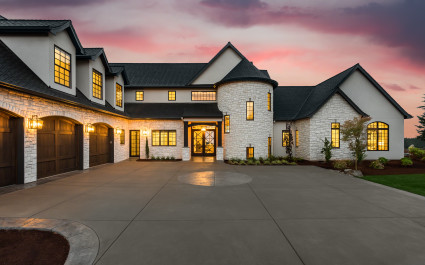IRS classifications: How your second home is taxed
The availability of second home tax deductions largely depends on how the IRS classifies your property. Understanding these classifications is crucial for knowing what you can and cannot deduct. The three classifications are:- True second residence: This is a second home you use primarily for personal use, like a vacation home or a getaway property for you and your family. The IRS classifies this as a personal residence. While it won't qualify for all the tax breaks of your primary residence, you may still be able to deduct certain expenses.
- Mixed-use property: This is the most common classification for vacation rental tax rules purposes. It applies to a second home you use personally but also rent out for a period of time. Homeowners in this category may qualify for a mix of personal and rental property tax deductions.
- Rental or investment property: A second home you rent out most of the time is considered a rental or investment property. They are subject to a different set of rules and, as a result, may qualify for more comprehensive investment property tax deductions compared to a standard second residence.
Tax deductions for second home ownership
Basking in luxury and relaxation isn’t the only advantage to owning a vacation home. Here are a few second home tax breaks you don’t want to miss.Mortgage interest deduction
Mortgage interest is the amount you pay to borrow money from the bank when you buy a home. A mortgage interest deduction is a tax benefit that allows owners of one or two qualified homes to write off the interest they paid on their mortgage. But remember that you can only claim the mortgage interest deduction for two homes, regardless of how many properties you own.- Qualifications: A qualified home includes sleeping, cooking and toilet facilities. This applies even if the residence is a condo, a recreational vehicle or a boat, as long as you live there part time. If you rent out the home, you must live there at least 14 days per year or more than 10% of the time a renter uses the property, whichever is longer, for it to be considered a second home for tax purposes.
- Loan type: The deduction applies to first and second mortgages, as well as home equity loans (HELOCs), as long as the loan proceeds are used to acquire, construct or substantially improve the home.
- Current limits: The deduction is limited to the interest paid on up to $750,000 of combined mortgage debt for both your primary and second home ($375,000 for married couples filing separately). This limit is now permanent under new tax legislation, so the previously expected increase to $1 million is no longer in effect. For loans taken out on or before December 15, 2017, the limit remains at $1 million ($500,000 for married couples filing separately).
- Tax forms: You'll need Form 1098 from your lender to report the interest you paid. You must itemize your deductions on Schedule A (Form 1040).
Property tax deduction
Another key second home tax deduction is for property taxes. Property tax is an annual fee charged to homeowners based on the value of their property. These taxes usually go toward funding local schools, public safety, roads and infrastructure, parks, library services and more.- Qualifications: You can claim this deduction on as many properties as you own, including a second home, as long as you itemize your tax return. The deduction is for property taxes charged by local governments to fund services like schools and infrastructure.
- Current limits: The deduction for state and local taxes (SALT), which includes property, income and sales taxes, has increased significantly. For 2025, the cap is $40,000 per tax return ($20,000 for married couples filing separately). This increased cap is subject to a phase-out for high-income taxpayers and is scheduled to revert to the old $10,000 limit in 2030.
- Tax forms: To claim this tax break, you must itemize your deductions on Schedule A (Form 1040).
Home equity loan interest deductions
You can deduct interest paid on a home equity loan or home equity line of credit (HELOC) if you use the funds to buy or improve your primary or second home. This deduction is part of the larger mortgage interest deduction and requires you to itemize your tax return.- Qualifications: The loan must be secured by your primary or second home, and you must use the loan proceeds for specific purposes, such as adding a room, renovating a kitchen or installing a new roof. Using the loan for other purposes, like paying off credit card debt or funding college tuition, won’t qualify for the deduction.
- Current limits: The combined total of your primary mortgage and any home equity debt must not exceed $750,000 ($375,000 for married couples filing separately). Interest on debt above this limit is not deductible. For loans taken out on or before December 15, 2017, the limit is higher at $1 million ($500,000 for married couples filing separately).
- Tax forms: You'll need Form 1098 from your lender. To claim the deduction, you must itemize on Schedule A (Form 1040). You should also keep detailed records and receipts to prove that the loan funds were used for a qualified home improvement.
Energy efficiency tax breaks
The U.S. government offers two main tax credits for homeowners who make eco-friendly upgrades: the Energy Efficient Home Improvement Credit (EEHIC) and the Residential Clean Energy Credit (RCEC). These credits are designed to incentivize homeowners to reduce their environmental impact.- Qualifications: You can claim these credits on a second home, but only if you use the home as a part-time personal residence and not solely as a rental property. Eligibility for specific improvements can vary. Certain upgrades like windows and insulation are only eligible for a tax credit on a primary residence, while larger, installed systems like solar panels, heat pumps and geothermal systems may qualify for a tax credit on a second home.
- Current limits: The EEHIC has an annual limit of $1,200 for most home improvements, with a higher annual limit of $2,000 for heat pumps, biomass stoves and biomass boilers. The maximum combined credit a taxpayer can claim under the EEHIC is $3,200 annually. The RCEC, which covers items like solar panels and wind turbines, provides a credit of 30% of the cost with no annual or lifetime dollar limit. However, both the EEHIC and the RCEC are set to expire on December 31, 2025.
- Tax forms: To claim either of these credits, you must file Form 5695, Residential Energy Credits, with your tax return. Beginning in 2025, some items may require you to include a Product Identification Number (PIN) from the manufacturer on your tax return. You do not have to itemize your deductions to claim these credits.
5. Capital gains deduction
A capital gain is the profit you make from selling a capital asset, such as a second home. The amount of your gain is the difference between your adjusted basis (what you paid for the property, plus the cost of any major improvements) and the net earnings from the sale (the selling price minus expenses like realtor fees and closing costs).One of the best ways to avoid tax on second home sales is to convert your second home into your primary residence. The IRS allows you to exclude up to $250,000 in gains ($500,000 for married couples) if you have lived in the home for at least two of the five years leading up to the sale. These two years do not have to be consecutive.- Qualifications: The tax applies to the profit you make from the sale of a second home. The length of time you own the property determines if the gain is short term (held for one year or less) or long term (held for more than one year).
- Current limits: Short-term capital gains are taxed at your normal income tax rate, as high as 37%. Long-term capital gains are subject to lower rates, which for 2025 are 0%, 15% or 20%, depending on your income. The primary residence exclusion is limited to $250,000 for single filers and $500,000 for married couples.
- Tax forms: The profit from your second home sale is reported on Form 8949, Sales and Other Dispositions of Capital Assets, which is then used to complete Schedule D (Form 1040), Capital Gains and Losses. You may also receive Form 1099-S, Proceeds From Real Estate Transactions, from the closing agent.
Understanding the 14-Day Rule and its tax implications
The 14-day rule determines whether your property is classified as a personal residence with minimal rental activity or a full-fledged rental business, which impacts how your rental income and expenses are taxed.Tax-free rental income (14 days or less)
If you use your second home as a personal residence and rent it out for 14 days or less during the year, a special rule applies: You don’t have to report any of the rental income earned on your tax return. However, it's a trade-off: You’re also not allowed to deduct any rental-related expenses, such as advertising, cleaning or property management fees.| Example: Say you're renting your home for 14 days during a major event, like the Olympics or a popular music festival. Because you've stayed within the 14-day limit, you do not have to report that income to the IRS. |
Reporting rental income (more than 14 days)
If you rent out your second home for more than 14 days a year, you must report all the rental income you earn to the IRS. This is done using Schedule E (Form 1040), where you will report your gross rental income and can then deduct a wide range of expenses to calculate your taxable profit or loss.| Example: The IRS requires you to divide your total expenses between rental use and personal use based on the number of days the property was used for each purpose. Say you use your mountain cabin for 20 days and rent it for 100 days. You can claim 83% of your mortgage interest, property taxes, insurance and utilities as rental expenses (100 rental days, 120 total days used). You can also deduct the full amount you pay for a cleaning service or rental agency. |
Rental expense deduction
Rental expense deductions allow landlords to recoup some of the money they spend on owning, maintaining and repairing their rental properties. The amount you receive will depend on your expenditures and Tax Cuts and Jobs Act (TCJA) limitations. These are some of the most common deductible expenses:- Mortgage interest: If you have a mortgage on your rental property, you can deduct the full amount of interest you pay. For many landlords, this is one of the largest tax write-offs.
- Property taxes: You can deduct the full amount of state and local property taxes you pay on your rental property. Unlike the personal property tax deduction, this is not subject to the $40,000 SALT cap.
- Utilities: If you pay for utilities such as electricity, gas, water or trash removal for the property, you can deduct these expenses. This is common for vacation rentals where a single meter serves multiple units or for properties where utilities are included in the rent.
- Insurance: You can deduct the cost of insurance premiums for your rental property, including fire, flood and liability insurance. If you have to prepay premiums for more than a year, you can only deduct the portion that applies to the current tax year.
- Repairs and maintenance: These costs keep the property in good working condition, like fixing a leaky faucet, patching a wall or repainting. These expenses are fully deductible in the year they are incurred, unlike larger improvements, which must be depreciated.
- Depreciation: This is a non-cash deduction that allows you to recover the cost of the property over its useful life (27.5 years for residential properties). You can also depreciate the cost of major improvements that add value, like a new roof or HVAC system.
- Professional fees: You can deduct fees paid to professionals who help you manage the rental business. This includes fees for a property manager, accountant, tax preparer or lawyer for drafting a lease.
- Advertising costs: The money you spend to attract new tenants is fully deductible. This includes costs for online listings, newspaper ads, brochures or even professional photos of the property.
- Travel expenses: If you travel to your rental property for business purposes, you can deduct the cost of your travel. This includes airfare, car rental and lodging expenses, but be sure to keep detailed records and distinguish business trips from personal vacations.
Rental depreciation deduction
If you are using your second home exclusively as an investment property, you can collect the rental depreciation deduction. The IRS considers a residential rental property to have a useful life of 27.5 years, so you can deduct a portion of the property's value each year. You may recover the total cost of your expenses if the amount is less than $1,080,000, doesn’t surpass your taxable income and meets the requirements for a qualified property, service or improvement. Here’s how you can qualify for a rental depreciation deduction on your second home:- Qualifying homes: You must own the property and use it to generate income. The property must have a useful life of more than one year and be fit for habitation.
- Current limits: You can generally deduct about 3.636% of the building's cost basis each year. Additionally, the new H.R. 1 passed in 2025 has reinstated 100% bonus depreciation for certain qualified rental property improvements placed in service after January 19, 2025. This lets you deduct the cost of things like new appliances, carpeting and furniture in the first year instead of depreciating them over several years.
- Tax forms: Use Form 4562, Depreciation and Amortization, to claim your depreciation deduction. If you own multiple homes, specify the property under section 179. You are not required to itemize your deductions on your personal tax return to claim this deduction; it’s a business expense reported on Schedule E.
Find your perfect vacation home with Pacaso
Understanding the tax benefits of a rental property is an important part of the journey. Once you're ready to find a property that suits your lifestyle, Pacaso offers a simplified path to vacation home ownership. By co-owning a professionally managed, luxury home, you can enjoy all the benefits of ownership without the hassle.Second home tax deductions FAQ
01: How do I know if my home qualifies as a second home for tax purposes?
The IRS considers a property a second home if you reside in the residence at least 14 days of the year or at least 10% of the days you rent it out — whichever time is longer.
02: What expenses don’t qualify for tax deductions on a second home that I use as a personal residence?
Here are a few examples of tax deductions that don’t apply to second homes:
- Personal expenses
- General operating expenses or repairs
- Losses
- Rental expenses (if the property is rented out for less than 14 days)
03: What taxes will I be required to pay on my second home?
Here are some taxes you may be obligated to pay on your second home:
- Property taxes: You must pay property taxes to the local government for any real estate you own in the area.
- Income taxes: You must pay taxes on income generated by renting out your second home.
- Capital gains taxes: If you sell your second residence, you may have to pay capital gains tax because the profit you make from the sale will be treated as income.
You may also be required to pay for local fees or special assessments in some areas, but this won’t impact most homeowners.
04: What is the Tax Cuts and Jobs Act?
The TCJA is a piece of U.S. tax legislation that was passed in 2017. It was written to reform and simplify the existing federal tax code. In essence, it changed tax deductions and credits to stimulate economic growth.
05: How can I get a tax break on the sale of my second home?
In most cases, you can’t get a capital gains tax break when selling a second home, as the tax exclusion only applies to a primary residence. To qualify, you must have lived in the home as your primary residence for at least two of the five years leading up to the sale.
** The information in this article is for educational purposes and should not be used in place of tax advice. Consult a licensed tax professional for advice on your properties and any deductions you may qualify for. The information in this article was last verified on 09/05/2025.










